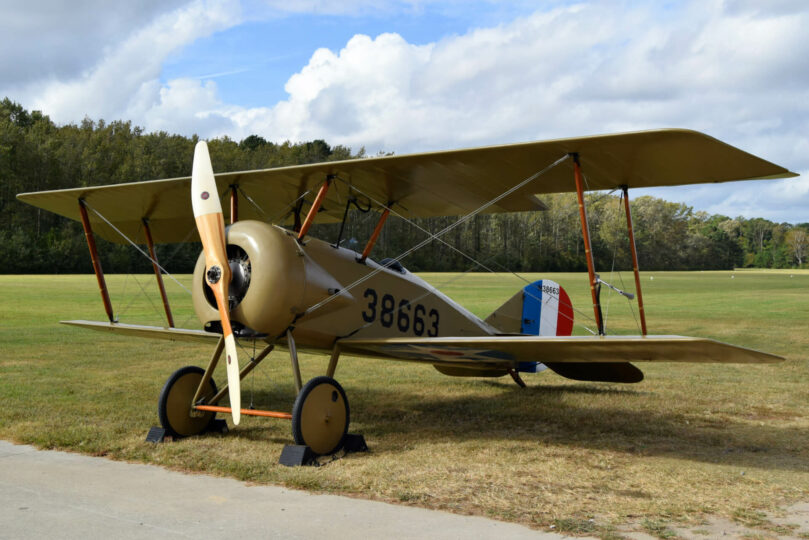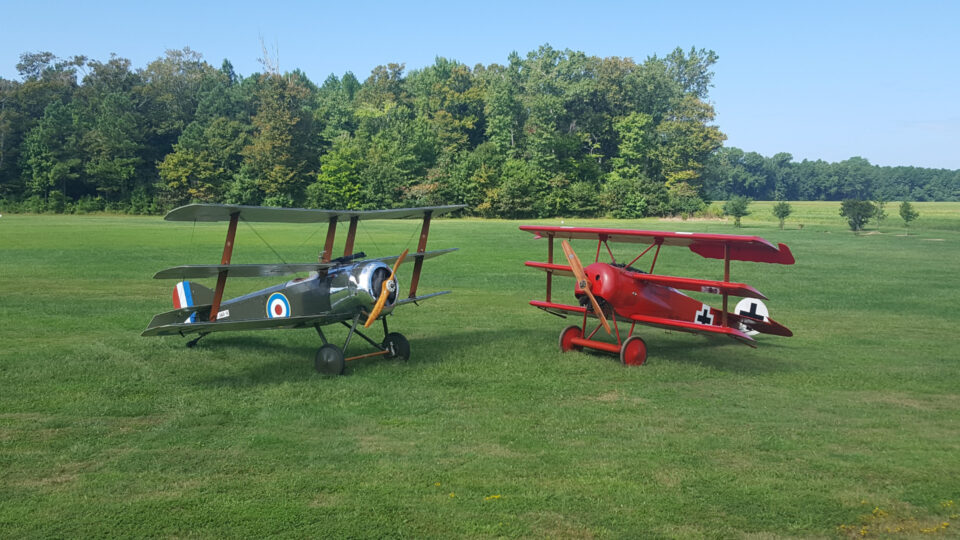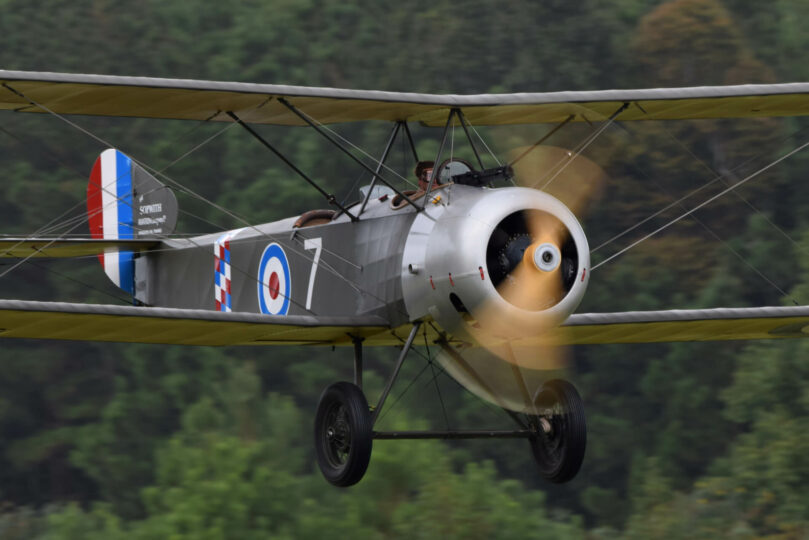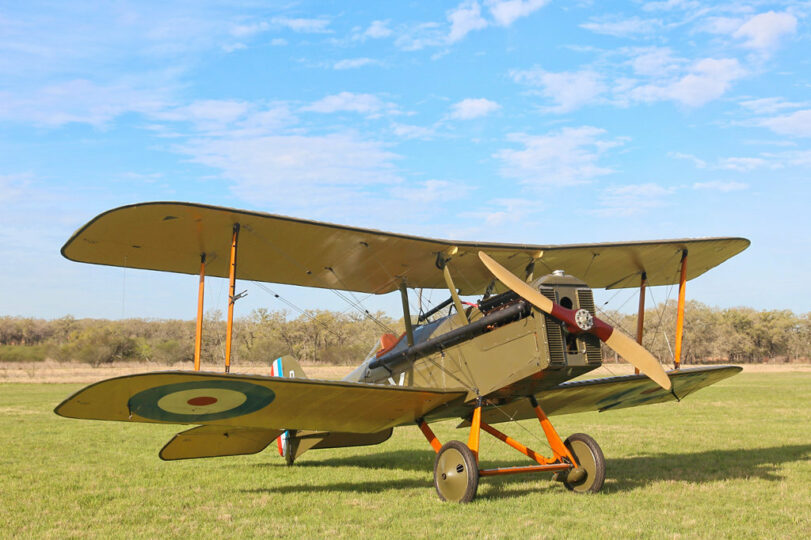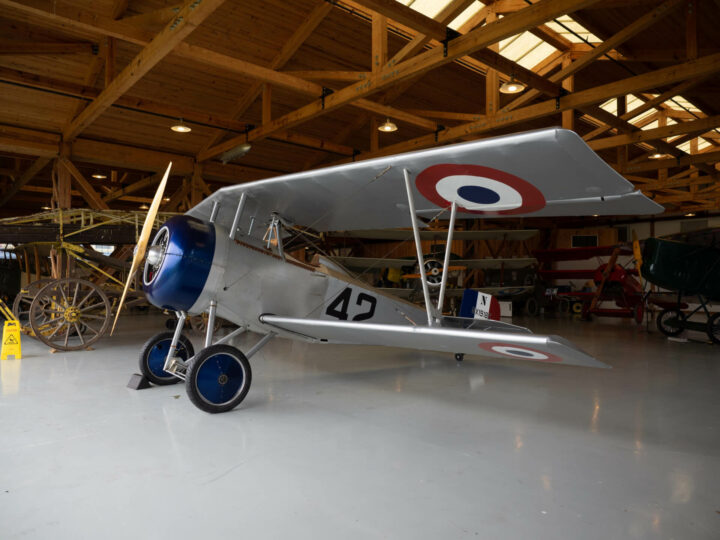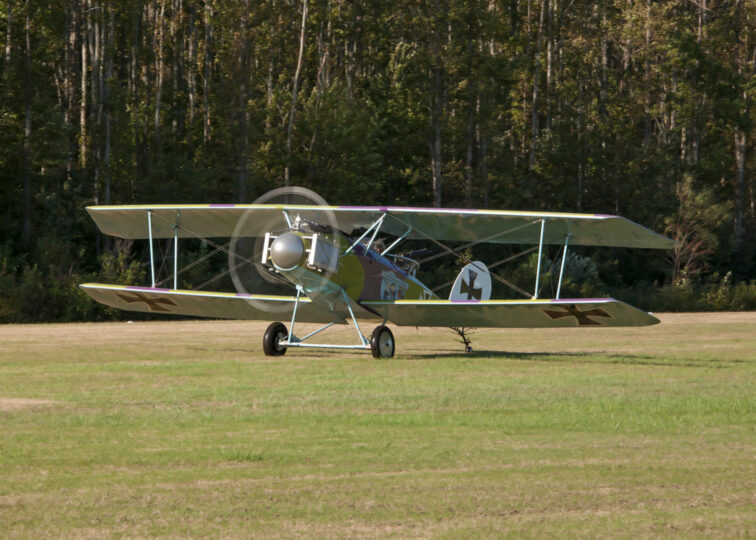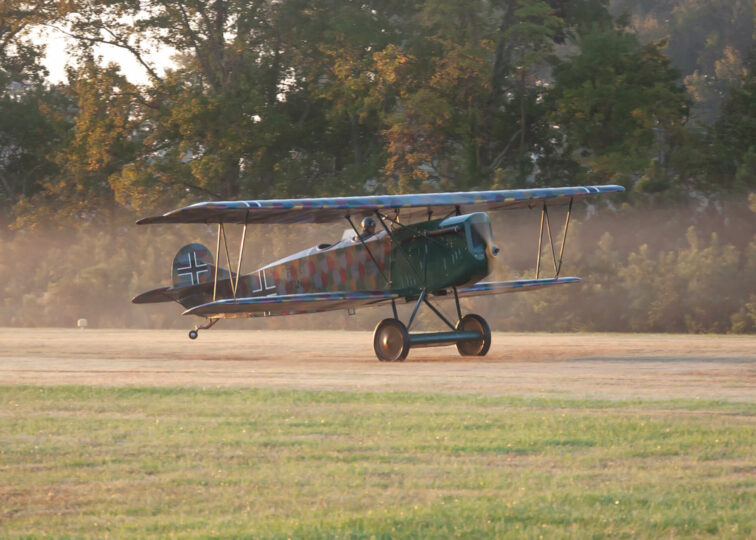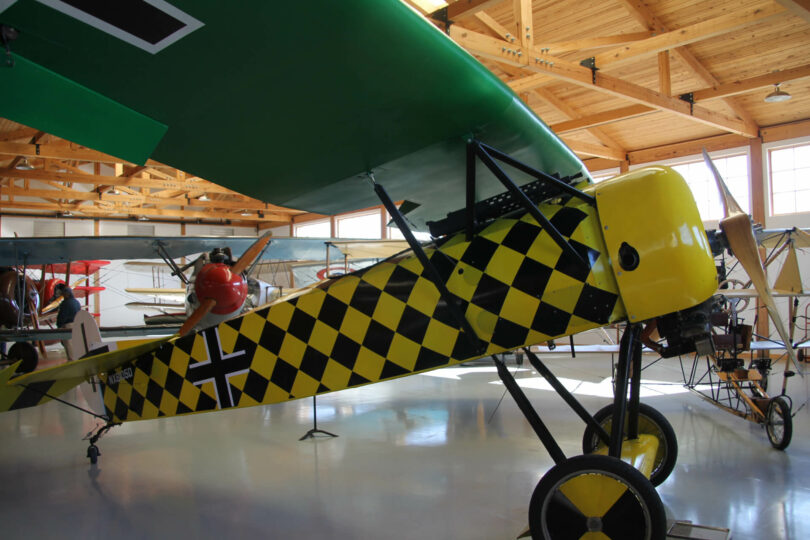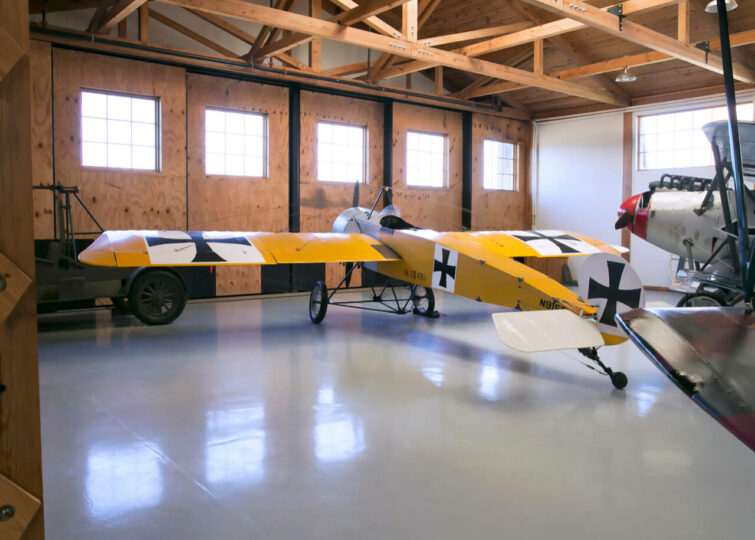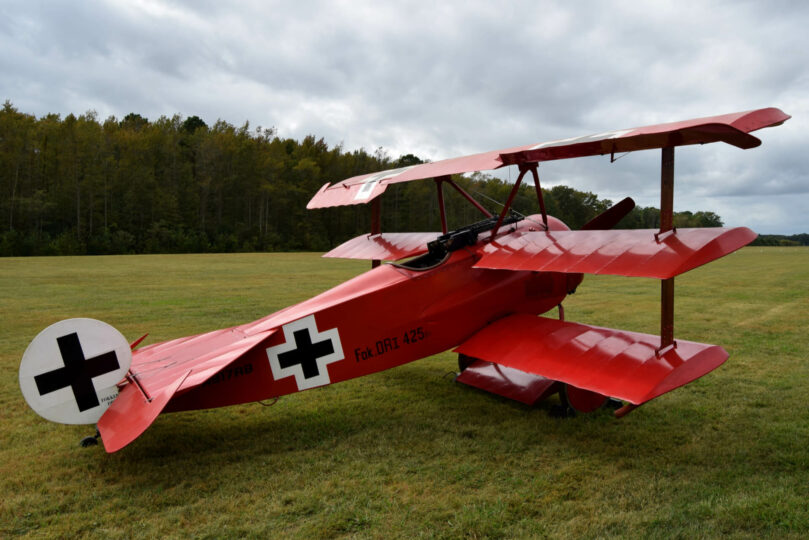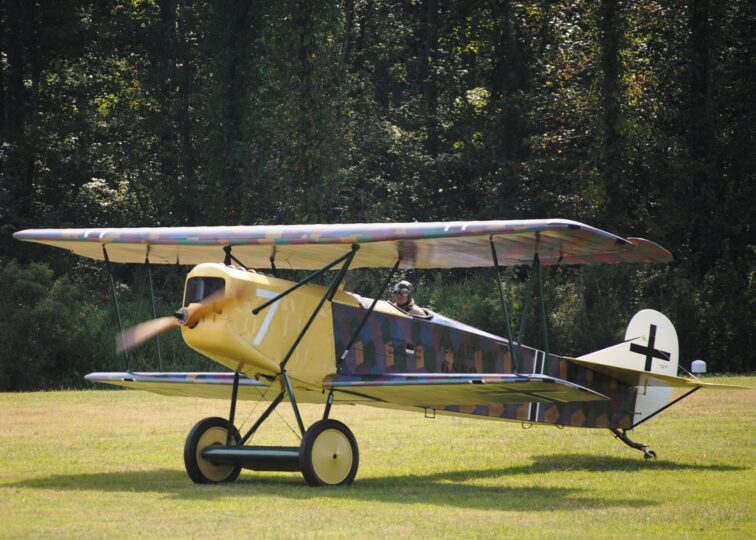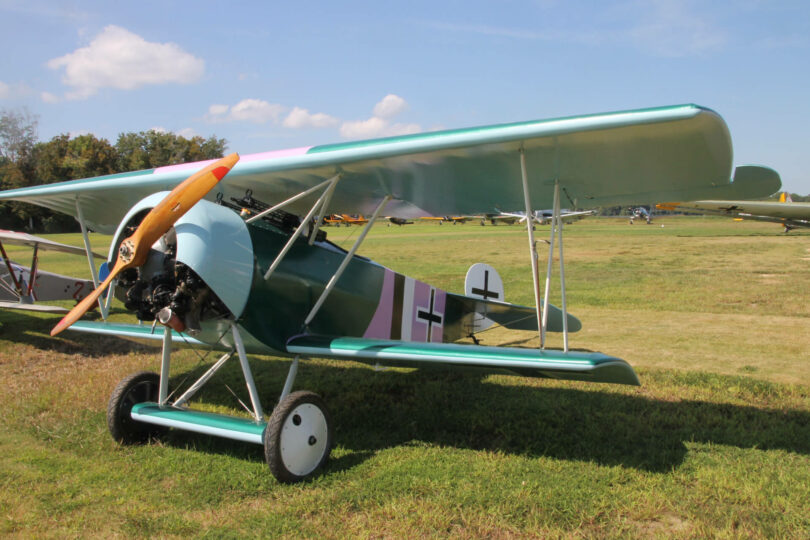The S-4C Scout, although unsuitable for combat service, was successfully employed as an advanced trainer. Its one gun and 100 mph speed were outclassed by the two gun, 130-mph fighters of 1917-18 making it unacceptable as a frontline fighter. Since the United States had no obsolete pursuit aircraft of its own to use as advanced…
The Sopwith Triplane is a three-wing single seat scout (fighter) mounting a Vickers .303 caliber machine gun that fired through the propeller. It was privately developed by Sopwith and flew exclusively with the Royal Navy from December 1916 through the end of 1917 when they were replaced by Sopwith Camels. Pilots nicknamed the Sopwith Triplane…
Sopwith 1 ½ Strutter was the British early 1916 counter to the German Eindeckers. It was named the 1 ½ Strutter due to its unique construction of the half struts in the center at the cockpit holding the top wings together. It was built both in single seat (bomber) and two seat (fighter/observation) roles. Its…
Introduced in April 1917 during the Battle of Arras by the famous 56 squadron of aces (26) which included Maj James McCudden and Capt. Albert Ball. It was the first British single-seat fighter to mount two-machine guns as standard armament. Like the Sopwith Pup and Triplane, it has an adjustable tailplane (trim). The SE5a ended…
The Nieuport 17 was a larger and a more powerful successor to the Nieuport 11 with its 110hp LeRhone 9J rotary engine (103 mph), continuing the sesquiplane scout layout (bottom wing smaller that the top). The sesquiplane was used to improve downward visibility. Unfortunately, due to aerodynamic and structural interactions not understood at that time,…
The Halberstadt CL.IV was an exceptional two-seat fighter used mainly as an infantry air/ground support aircraft providing direct low-level support of mobile German storm troops (Strumtruppen) during the last months of the World War I. It was the mission forerunner of future air/ground support aircraft such as the Ju 87 Stuka used in WWII and the…
The V38 design was essentially an enlarged Fokker D.VII fighter with two seats and a 185-hp BMW IIIa engine. It was the final wartime development of the D.VII. It was built at the request of the German airforce for a fast two-seater which could be built with D.VII parts and tooling. It was armed with…
139 E.V.s (E: monoplane, V:5th from Fokker) were built and sent to squadrons in August 1918. It married an innovative airframe with an obsolete dead- end rotary engine. Only two fighter Squadrons JASTA 6 & 19, received a full complement of twelve. The E.V. was in combat from 5-19 August 1918 but was grounded after…
The Eindeckers were designed and constructed as a single seat- single wing reconnaissance aircraft by Fokker. During WW1, aircraft performing this function were called “scouts”. The 3rd version was the E.III, the first production built “true fighter” armed with a single 7.92-mm Spandau LMG 08 machine gun with 500 rounds of ammunition synchronized to fire…
Richtofen’s all red Dr.I was the iconic symbol of WW1 air-to-air combat. It also became well known to Americans via Snoopy, Charlie Brown’s pet beagle in Charles Schulz’s popular syndicated comic strip “Peanuts.” Snoopy has a Walter Mitty-like fantasy life and one of his alter egos was playing the World War 1 Flying Ace. Donning…
Nearly 3,300 D.VII aircraft were produced in the second half of 1918. It made a “dramatic impact on the air war over the Western Front; German pilots doubled their rate of scoring victories after they started flying it.” DVII’s achieved more victories than all other German aircraft between August 1914 and April 1918. The metal…
The Fokker utilized available German manufacturing and rotary technology developed for the Dr.I triplane for this faster experimental biplane, the prototype V13/I. Developed at the same time as the D.VII (V18), the wings looked like a scaled down D.VII wing but were designed and proportioned for the type with the fuselage and empennage like the…

